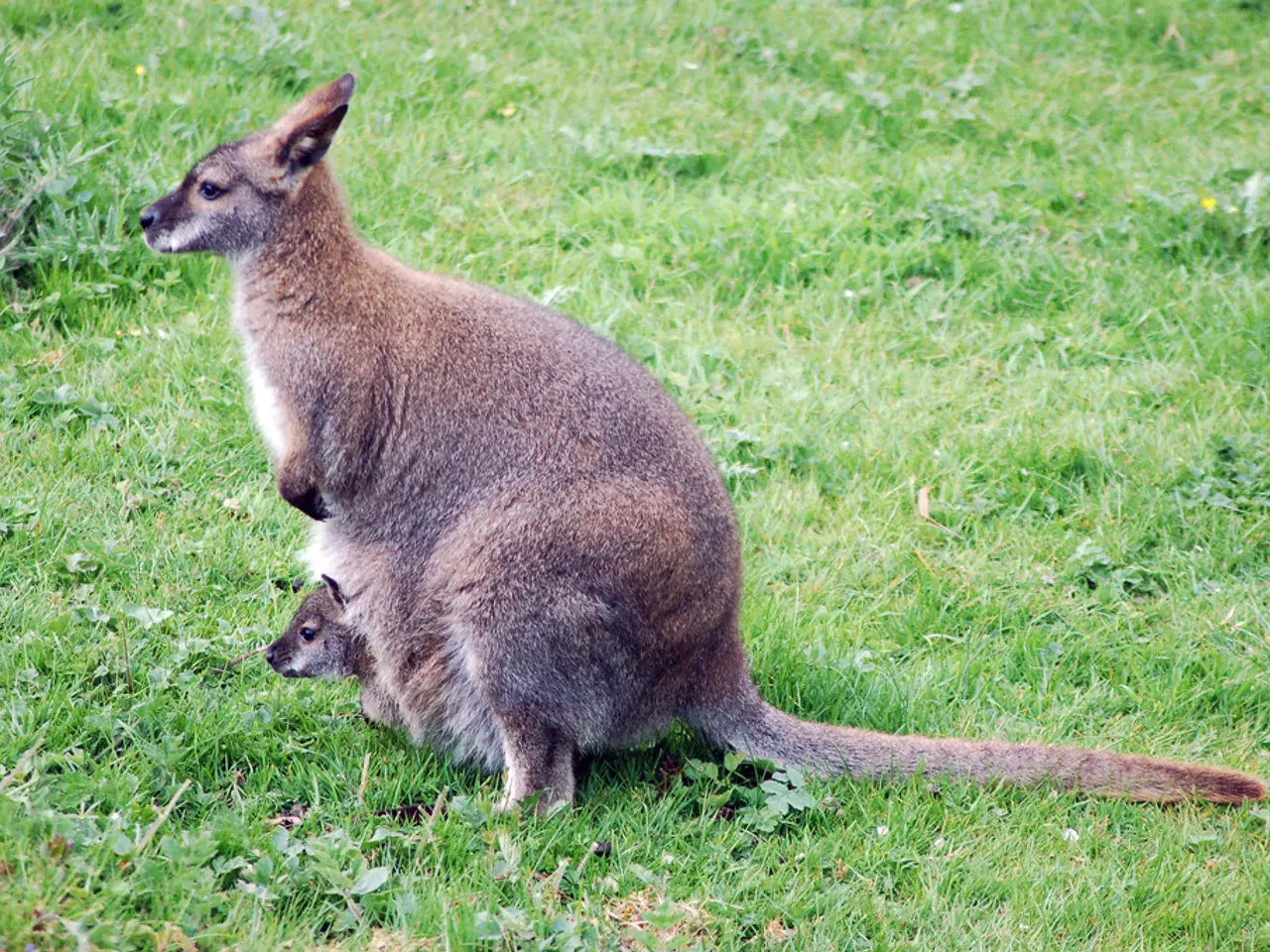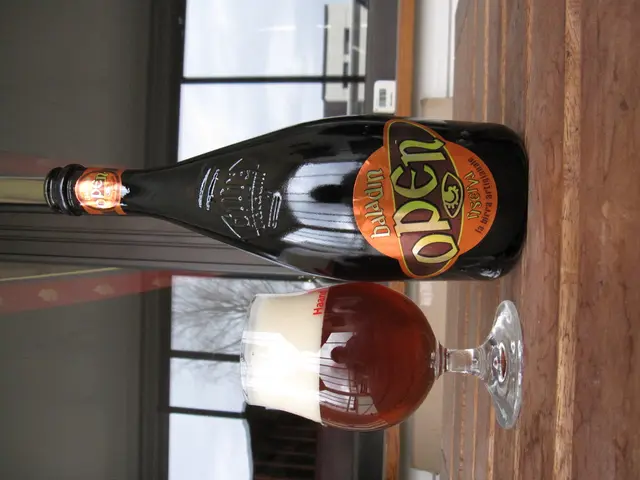Is it true that kangaroos possess three reproductive organs? Investigating the myth regarding kangaroo anatomy.
In the vast, sun-drenched landscapes of Australia, the kangaroo stands as a symbol of resilience and adaptability. As the world's largest marsupial, these iconic creatures boast a remarkable reproductive system that has been finely tuned by evolution to thrive in their challenging environment.
At the heart of this system are the three vaginas and two uteruses found in female kangaroos. This unusual configuration provides significant reproductive advantages and flexibility, allowing them to manage multiple stages of reproduction simultaneously.
During mating, sperm travel through two lateral vaginas to fertilise eggs. The central vagina, which serves as the birth canal, remains dormant until the female becomes pregnant for the first time. This system enables female kangaroos to nurse a joey in the pouch, be pregnant with an embryo in the uterus, and maintain a dormant embryo in a state called embryonic diapause.
Embryonic diapause is a crucial adaptation that allows female kangaroos to pause the development of a fertilised embryo until environmental conditions, such as food availability and climate, are favourable for birth and survival. This pause can last months, allowing kangaroos to optimise the timing of birth and improve offspring survival in Australia's often harsh and unpredictable environment.
The kangaroo's ability to feed young at different developmental stages concurrently is also enhanced by this reproductive anatomy. Teats produce different nutritional compositions of milk to meet the needs of both a newborn joey and an older one still in the pouch.
Kangaroos can continue their reproductive cycle during pregnancy and lactation, with a male kangaroo's sperm able to fertilise an egg in either uterus. The kangaroo's central vagina does not fully connect to the outside until the female marsupial becomes pregnant for the first time.
A newborn kangaroo is underdeveloped and requires a long time in its mother's pouch for nursing and growth. The joey spends the first 10 months of its life in the pouch, growing from a pink, scraggly skeleton to a fuzzy baby. The last 8 months, the joey is called 'young at foot', learning to hop around and thermoregulate, but still highly reliant on the mother.
The fully developed joey emerges through a new opening, marking the end of its time in the pouch. However, the egg's development is not as swift. It takes approximately 30 days for an egg to go from conception to birth, while a joey spends 18 months in the pouch.
Lactation is very expensive for kangaroo mothers, often more so than pregnancy. This is another reason for the kangaroo's strange anatomy, as it allows them to produce another joey quickly if the current one dies due to drought conditions.
The kangaroo's body puts the egg's development on pause when there's already a joey in the pouch, ensuring that resources are directed towards the current offspring. This quirk of evolution also prevents the offspring from getting larger due to the passage of urinary tracts through the spaces between the three vaginas.
In summary, the multiple vaginas and dual uteri of female kangaroos enable flexible sperm reception and fertilisation, controlled timing of birth via embryonic diapause, and concurrent nurturing of offspring at different stages. These adaptations are all evolutionary responses to maximise reproductive success in challenging conditions.
- Science shed light on the kangaroo's unique reproductive system, revealing three vaginas and two uteruses, providing significant advantages for managing reproduction in challenging environments.
- The intricate reproductive system of kangaroos allows for simultaneous management of multiple stages of reproduction, including nursing a joey, being pregnant, and maintaining a dormant embryo.
- Embryonic diapause, a crucial adaptation in kangaroos, allows the pausing of embryo development until conditions for birth are optimal, improving offspring survival in harsh and unpredictable environments.
- The system enables the production of different nutritional milk compositions to meet the needs of newborn and older joeys concurrently, showcasing workplace-wellness within the kangaroo family.
- Kangaroos can continue their reproductive cycle during pregnancy and lactation, with therapies and treatments available for managing potential medical-conditions during these critical periods.
- Chronic diseases, such as cancer and respiratory conditions, are not as prevalent in kangaroos due to their high-adaptability and resilience, but they are studied in environmental-science to gain insights for human health-and-wellness.
- The kangaroo's eye-health, hearing, skin-care, and overall health are important aspects of their survival, with studies on these areas offering insights into various men's and women's health issues.
- Diet and nutrition play a significant role in kangaroo health, with weight-management being essential for overall fitness-and-exercise performance.
- Aging and its effects on health can be observed in kangaroos, offering insights into anti-aging therapies and treatments for humans.
- Concurrent research is being conducted on kangaroo skin-conditions and neurological-disorders to discover novel treatments for several chronic human diseases.
- Autoimmune-disorders are studied in kangaroos to better understand and manage these conditions in humans, highlighting the importance of interspecies scientific research.
- Climate-change impacts kangaroo health and reproductive cycles, raising concerns for their future and emphasising the necessity of addressing environmental issues for the preservation of diverse species.
- Mental-health has been identified as a crucial factor in kangaroo fathering and parenting behavior, with potential applications for human mental-health interventions.
- CBD, a compound derived from cannabis, is under investigation for its potential benefits in treating various health problems, including some neurological-disorders and chronic diseases, in kangaroos and humans alike.







